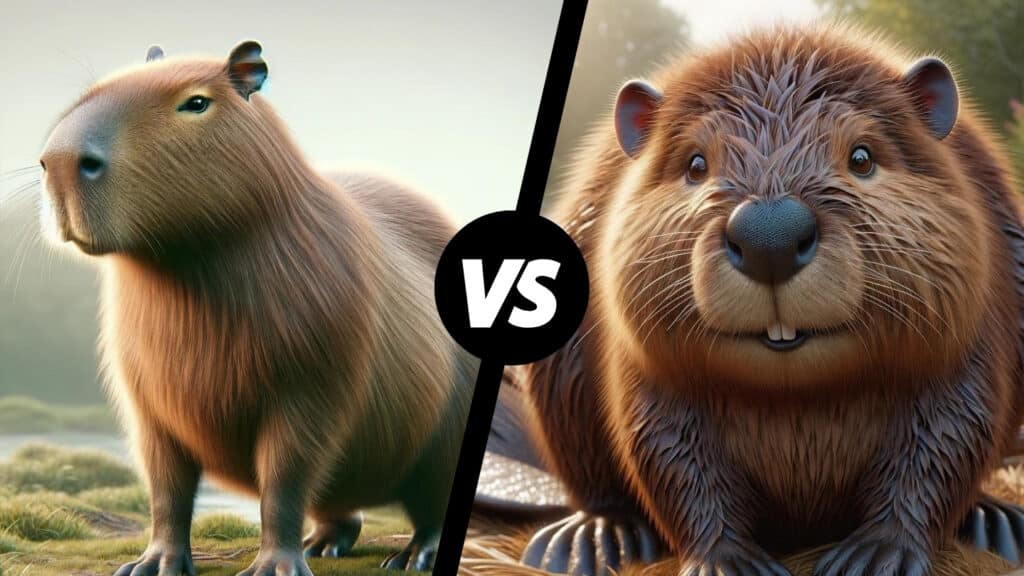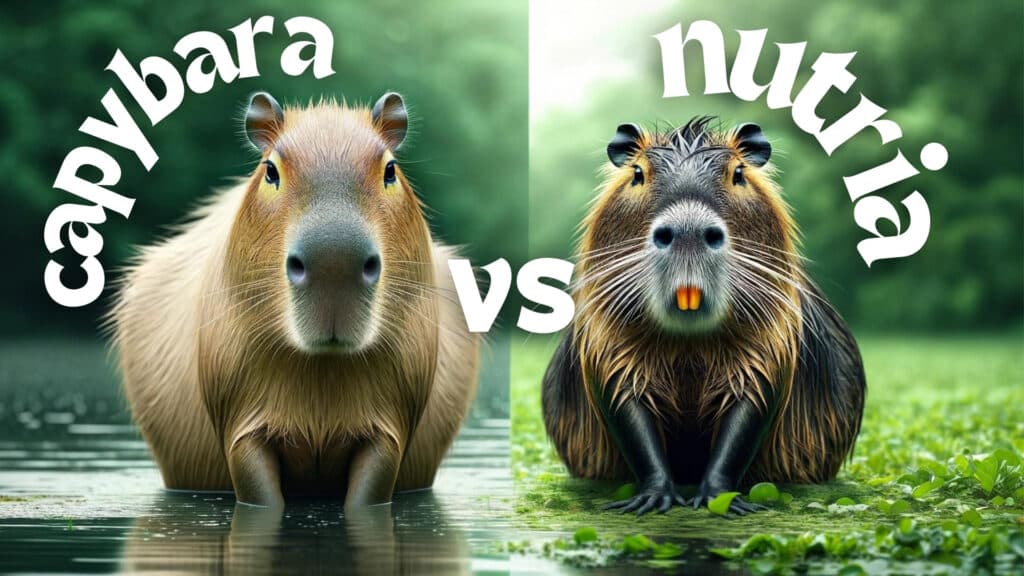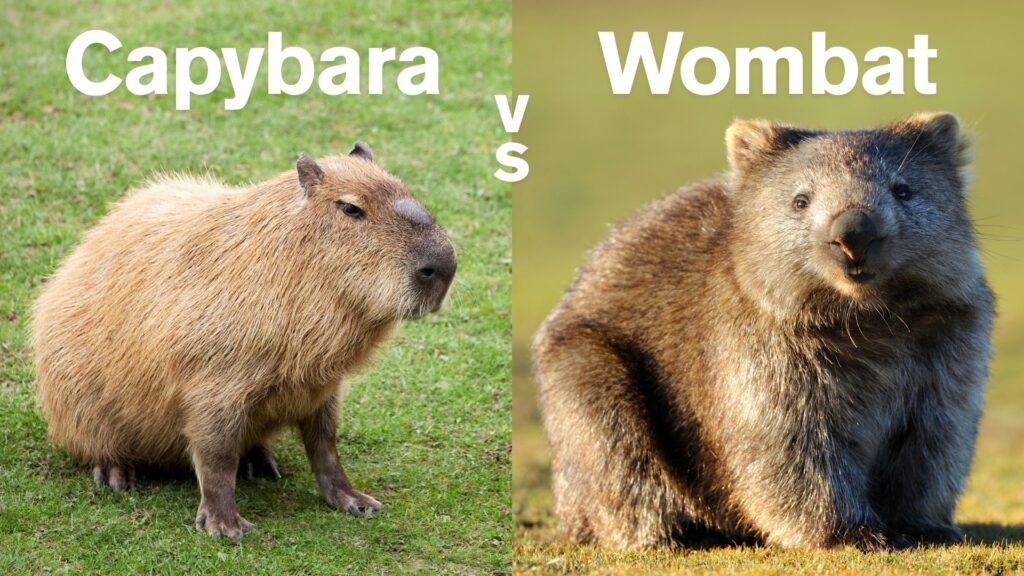Capybara, South America’s gentle giant and world’s largest rodent, stands in stark contrast to Madagascar’s fierce fossa, the island’s apex predator. Capybara thrives through peaceful social living and herbivorous habits, while the Fossa dominates through solitary hunting and carnivorous prowess.
Main Key Differences
Geographic Distribution: Capybaras inhabit South American wetlands and grasslands, while fossas are exclusive to Madagascar’s dense forests.
Diet: Capybaras are herbivores feeding on grasses and aquatic plants, while fossas are carnivorous predators hunting birds to lemurs.
Social Structure: Capybaras live in large social groups, while fossas are solitary creatures meeting only for mating.
Physical Build: Capybaras have barrel-shaped, semi-aquatic bodies with webbed feet; fossas possess sleek, muscular builds for climbing and hunting.
Comparative Analysis Table
| Characteristic | Capybara | Fossa |
|---|---|---|
| Kingdom | Animalia | Animalia |
| Class | Mammalia | Mammalia |
| Order | Rodentia | Carnivora |
| Phylum | Chordata | Chordata |
| Grooming | Social grooming within groups | Solitary self-grooming |
| Genus | Hydrochoerus | Cryptoprocta |
| Species | H. hydrochaeris | C. ferox |
| Family | Caviidae | Eupleridae |
| Life Expectancy | 8-10 years (wild), 12+ years (captivity) | 15-20 years (wild), 20+ years (captivity) |
| Hunting Ability | None (herbivore) | Expert predator, apex hunter |
| Loneliness | Cannot tolerate isolation, highly social | Prefers solitude, territorial |
| Space | Requires large territories near water | Needs extensive forest territory |
| Affection | Highly affectionate with group members | Limited affection, mostly during mating |
| Protection | Group protection, escape to water | Individual defense, climbing, stealth |
| Energy | Low to moderate, conserves energy | High energy for hunting, bursts of intense activity |
| Weight | 35-66 kg (77-146 lbs) | 5.5-8.6 kg (12-19 lbs) |
| Height/Size | 50-64 cm tall, 106-134 cm long | 24-27 cm tall, 61-76 cm long |
| Physical Characteristics | Barrel-shaped body, webbed feet, no tail, brown coat | Lean muscular build, retractable claws, long tail, reddish-brown coat |
Behavior
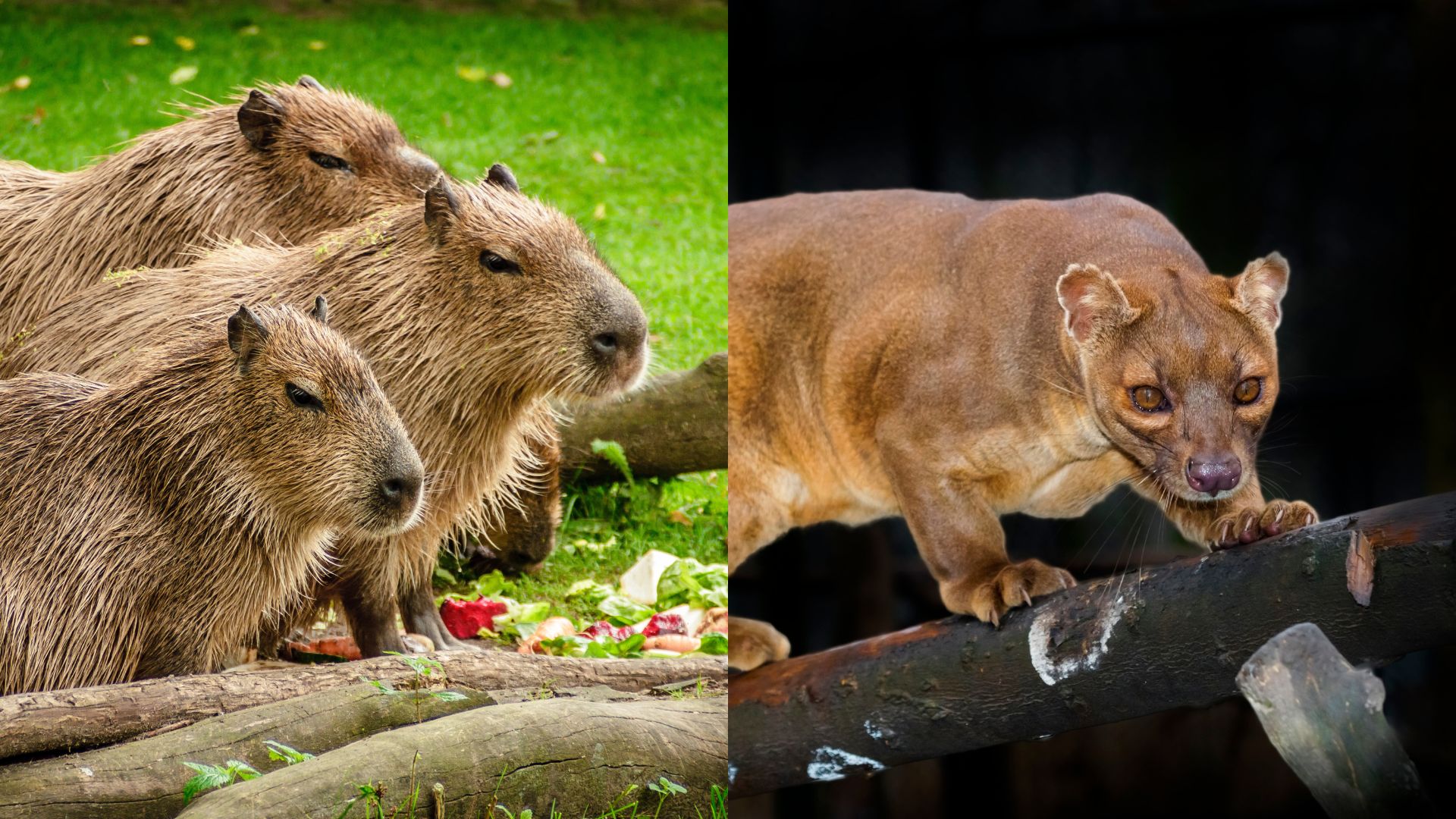
Capybara Behavior: These peaceful giants spend their days grazing in groups, allowing other animals to perch on their backs. They’re equally comfortable on land and in water, diving underwater to escape predators or cool off. They communicate through whistles, clicks, and purrs while engaging in social grooming to strengthen group bonds. Capybaras are often compared with other large rodents, and you might also be interested in how they compare with wombats in terms of lifestyle and physical traits.
Fossa Behavior: As apex predators, fossas display stealth and hunting prowess, being most active during dawn and dusk. They’re territorial animals that mark their territories with scent and employ both ambush tactics and active pursuit when hunting prey throughout Madagascar’s forest canopy.
Personality
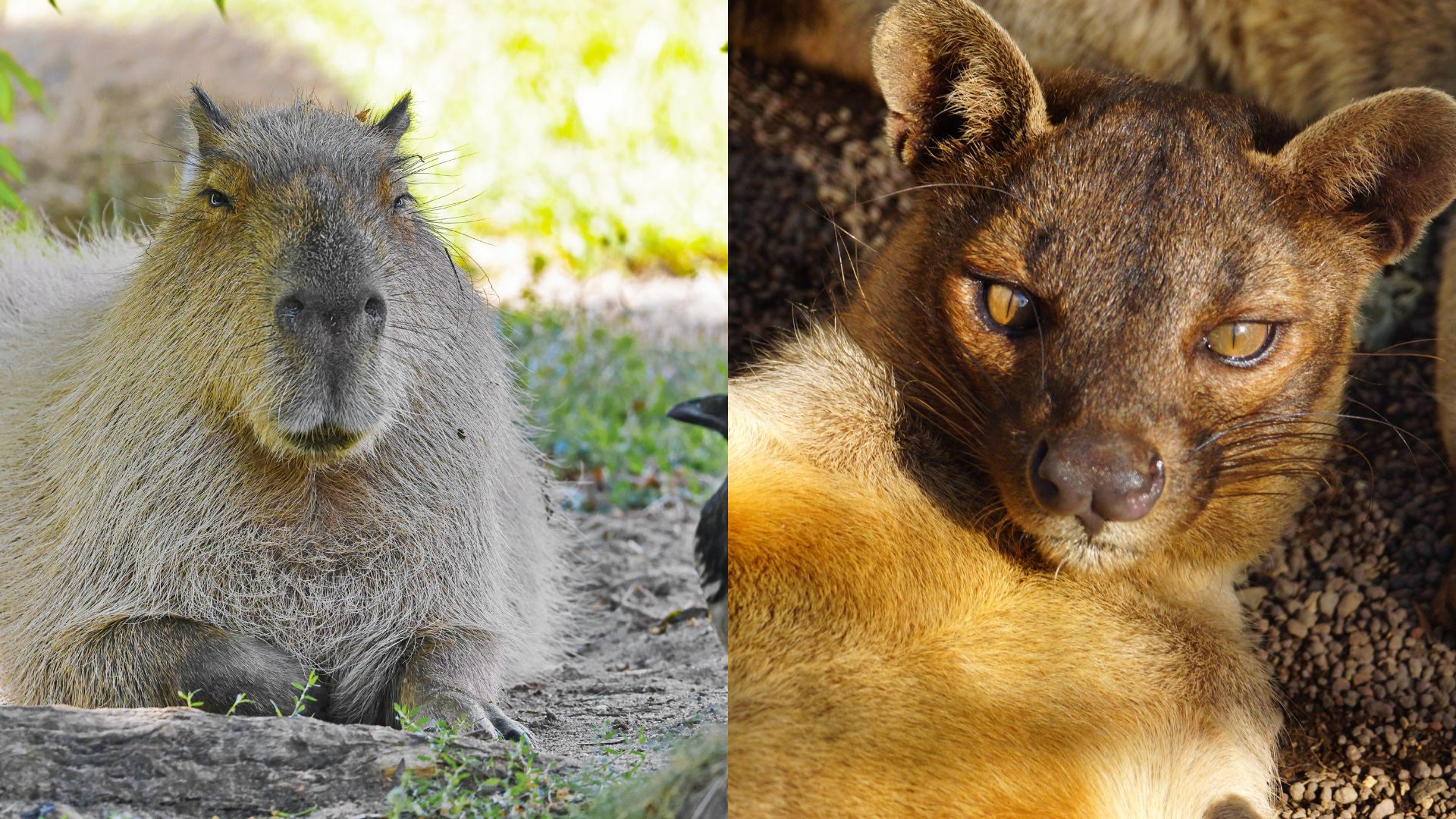
Capybara Personality: Renowned for their zen-like calmness and docile nature, capybaras exhibit remarkable tolerance for stress and exceptional social bonding abilities. They show genuine affection toward group members and can form bonds with humans, displaying patience and non-aggression even with other species. For those curious about capybaras and their rodent relatives, there’s also an interesting comparison between capybaras and guinea pigs that explores their similarities and differences.
Fossa Personality: Fossas display classic solitary predator traits – independence, cautiousness, and intensity. They’re naturally wary and can be aggressive when threatened, preferring solitude over group situations. Their personality is confident but elusive, observing from shadows rather than engaging directly.
Intelligence
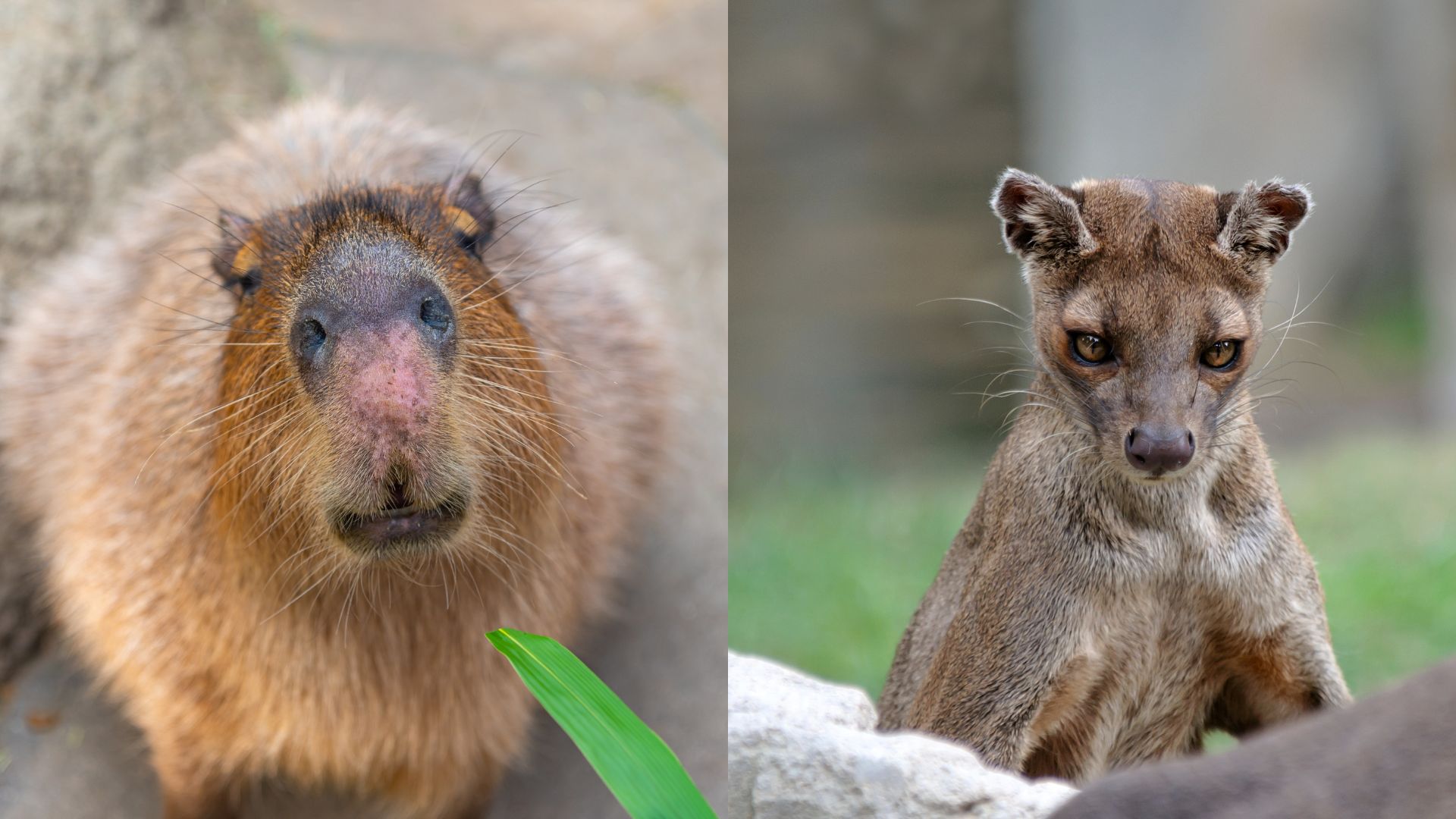
Capybara Intelligence: Capybaras possess social intelligence for navigating complex group dynamics, recognizing individual members, and understanding social hierarchies. They demonstrate problem-solving abilities related to finding food and navigating aquatic environments, plus can learn routines and adapt behavior based on environmental changes.
Fossa Intelligence: Fossas exhibit sharp tactical intelligence typical of apex predators, demonstrating sophisticated hunting strategies and the ability to plan ambushes. Their reversible ankles enabling tree climbing showcase significant spatial intelligence and body awareness for navigating three-dimensional forest environments.
After exploring how capybaras handle land predators like the fossa, it’s a fun twist to see their dynamic with animals like pelicans.
Swimming Power

Capybara Swimming Power: Exceptional swimmers with webbed feet and streamlined bodies, capybaras can hold their breath for up to five minutes and dive completely underwater to escape predators. They’re capable of swimming across significant bodies of water, with young learning to swim almost immediately after birth. To dive deeper into aquatic rodent comparisons, don’t miss this detailed breakdown of capybara vs. nutria that highlights their swimming habits and habitat preferences.
Fossa Swimming Power: While capable swimmers when necessary, fossas rarely encounter large bodies of water in Madagascar’s forests. Their body structure is optimized for terrestrial and arboreal activities rather than aquatic pursuits, limiting their swimming to crossing streams when needed.
Running Speed
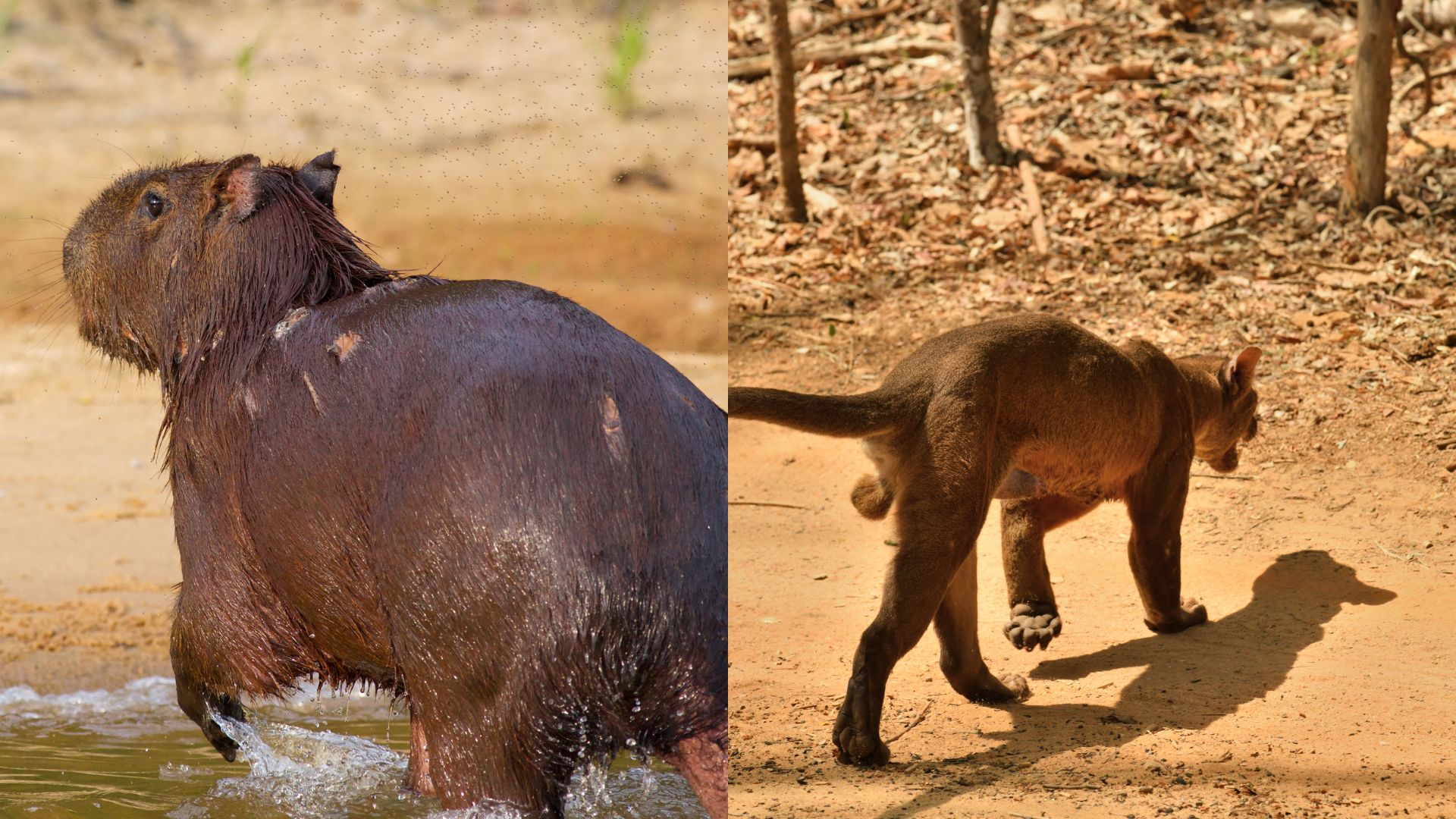
Capybara Running Speed: Despite their bulky appearance, capybaras can reach speeds up to 35 km/h (22 mph) when threatened. However, they prefer escaping to water rather than extended land chases, with their running style being somewhat ungainly but effective enough to evade most predators.
Fossa Running Speed: Fossas are significantly faster and more agile than capybaras, with their lean, muscular build and longer legs giving them advantages in pursuit scenarios. Their successful hunting of agile prey like lemurs indicates superior running capabilities for chasing down various prey species.
Body Language
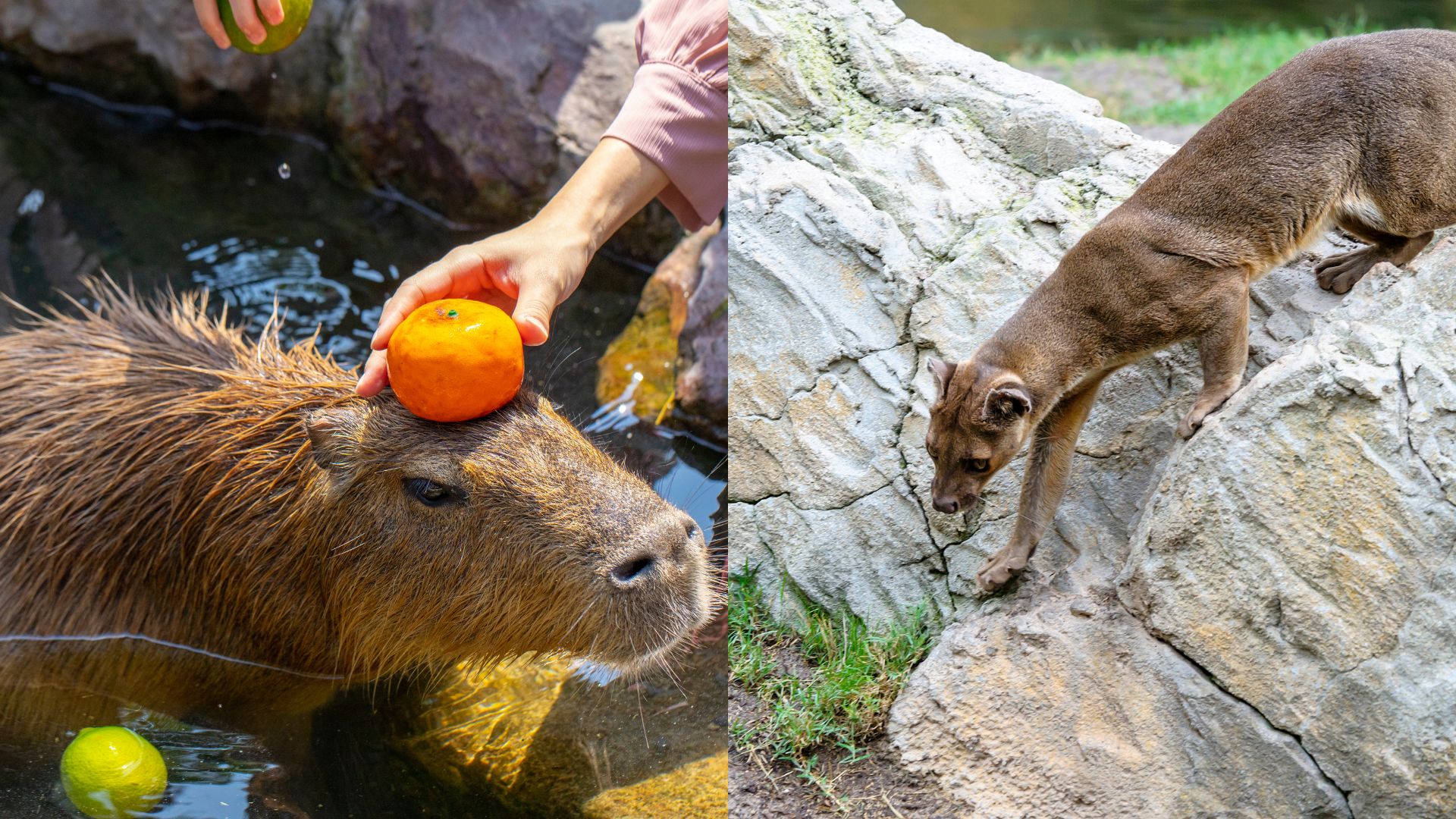
Capybara Body Language: Capybaras use ear positioning, tail movements, and body postures to communicate mood and social status within groups. Their peaceful nature shows through gentle body language – slow movements, relaxed postures, and non-threatening positioning, rarely displaying aggression while using subtle cues for group harmony.
Fossa Body Language: Fossas employ typical solitary predator body language with alert postures, careful movements, and territorial displays. When threatened, they arch their backs, raise their long tails, and display impressive canine teeth, using body language designed to communicate strength and deterrence rather than social bonding.
If you enjoy rodent matchups, check out this capybara vs. beaver comparison which covers how these two animals build, behave, and survive in the wild.
Conclusion
The comparison between capybaras and fossas illustrates the incredible diversity of mammalian evolution and adaptation. These two remarkable species have developed completely different strategies for survival – one through peaceful coexistence and social cooperation, the other through solitary predation and territorial dominance.
While a direct physical confrontation between these animals would be unlikely in nature due to their different geographic ranges, the fossa’s predatory nature and hunting capabilities would give it a significant advantage over the peaceful capybara. However, this comparison isn’t really about who would “win” in a hypothetical encounter, but rather about appreciating the unique evolutionary paths that have led to two fascinating examples of mammalian success.
The capybara’s approach to survival through social bonding, environmental adaptation, and peaceful coexistence stands in stark contrast to the fossa’s strategy of solitary hunting, territorial control, and predatory dominance. Both strategies have proven successful in their respective environments, highlighting the remarkable adaptability and diversity of life on Earth.
